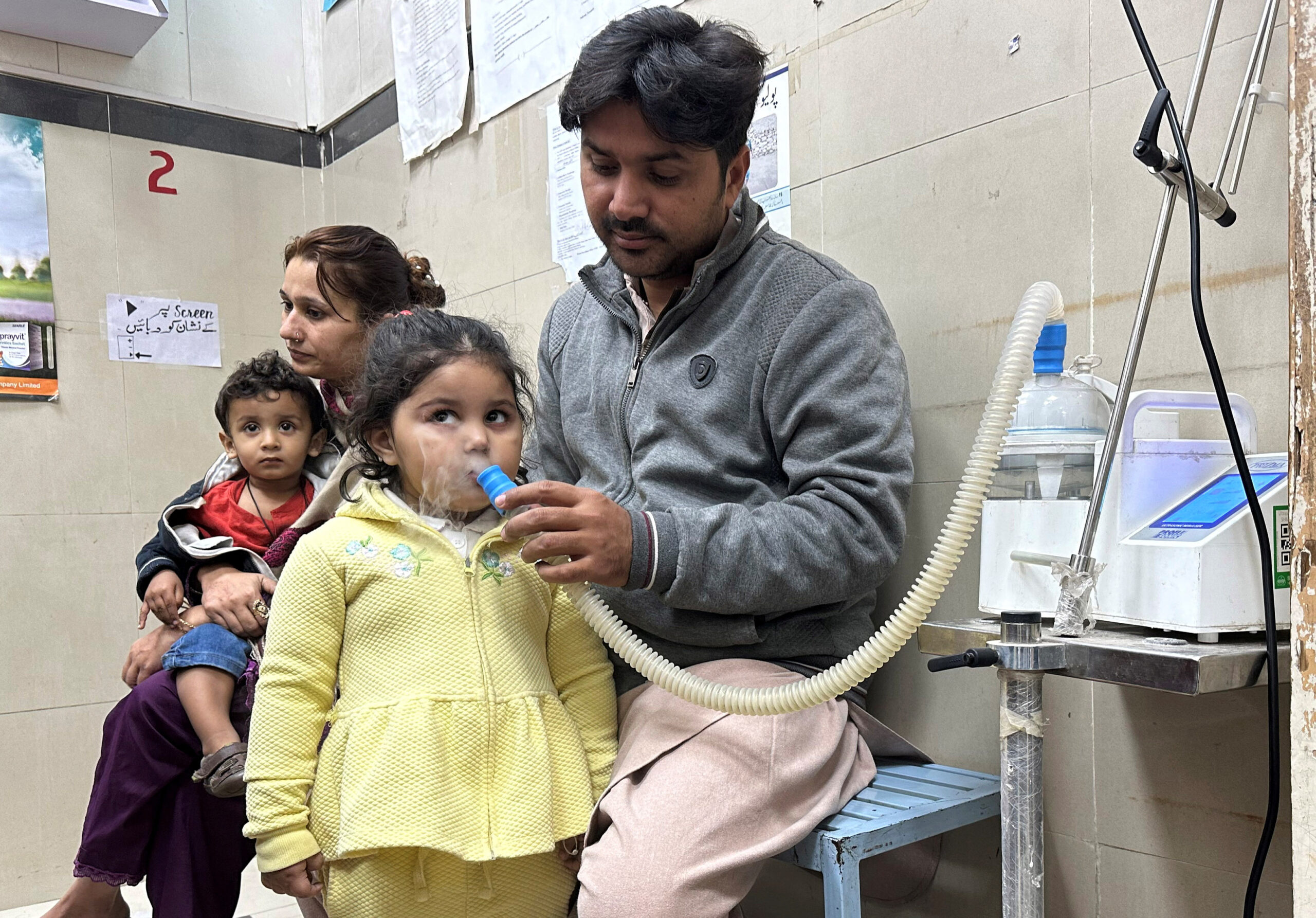- Saturday, April 27, 2024
Twenty-four of the last 30 days had ‘hazardous’ or ‘very unhealthy’ air quality, according to Swiss group IQAir

By: Eastern Eye
IN the packed paediatric emergency room of a Lahore public hospital, parents holding sick children lined up for treatment this month, part of a surge of young patients caused by the air pollution crisis in Pakistan’s second-most populous city.
“We are disturbed and tense,” said Mohamad Qadeer, holding a nebulising device to his threeyear-old daughter Rameen’s nose, engulfing her face in a billow of steam delivering the medication to ease her congested airducts.
She and her one-year-old sister Inaaya are among thousands of children suffering from pollution-related health problems. Health officials estimated there has been at least a 50 per cent rise in paediatric patients due to respiratory issues exacerbated by poor air quality in recent weeks.
Lahore, known historically as a city of gardens, is now choking with toxic smog that placed it as the world’s worst for air quality last year.
As cooler temperatures took hold in November, air quality levels spiralled. Twenty-four of the last 30 days had ‘hazardous’ or ‘very unhealthy’ air quality, according to Swiss group IQAir.
“It has gotten a lot worse than the previous years and it is affecting the health of the children,” said Dr Maria Iftikhar, senior registrar at Sir Ganga Ram hospital’s paediatric department.
The city of 11 million, considered the cultural capital of Pakistan, has been blanketed in thick haze that partially blocks the sun and shrouds streets with fog at night. The problem becomes more severe in cooler months, as temperature inversion prevents a layer of warm air from rising and traps pollutants closer to the ground.
Mohamad and his wife, Shazma, had tried to keep Rameen and Inaaya safe with masks and limiting time outdoors, but after days of coughing and fever the children stopped eating.
“We have been sleepless for three nights,” said Shazma, bouncing Inaaya on her knee as she held up the nebuliser to her face. More mothers and children waited nearby for their turn and a doctor rushed through the crowds with an infant in her arms, trailing a porter wheeling an oxygen canister pumping air to the baby.
“Inshallah (God willing), they will be better soon..,” Shazma said helplessly.
The Unicef said globally outdoor air pollution contributed to 154,000 deaths of children aged below five in 2019.
In Pakistan, it is one of the top five causes of death among the entire population and young children are the most severely affected, along with the elderly.
“Children are physiologically more vulnerable to air pollution than adults because their brains, lungs and other organs are still developing,” said the UN children’s agency, adding children breath twice as fast as adults, increasing exposure.
“The government should take strong measures because small kids are suffering,” said Shazia, cradling her nine-month-old son Mohammad who spent four days admitted to Sir Ganga Ram’s packed wards for a chest infection. The bed was shared by onemonth-old baby Noor, suffering from pneumonia, who cried through her oxygen tubes as her grandmother tried to sooth her.
Provincial health minister Dr Javed Akram said hospitals were on high alert, with beds and ventilators set aside for extra emergency cases.
Four partial lockdowns have taken place since the start of November as well campaigns to promote masks.
Crop burning, carried out by farmers to remove remnants of rice crops to make way for wheat, was a major contributor to the problem, he said, as well as poor quality fuel in vehicles and construction and industrial activity. Without prohibitively costly investments in specialised equipment for farmers, burning could not be fully curbed.
The provincial government was researching cloud-seeding to make artificially induced rain to clear the skies. It has also reached out to authorities in India, via diplomatic channels on how to improve the quality of air blowing across the border. (Reuters)
![]()